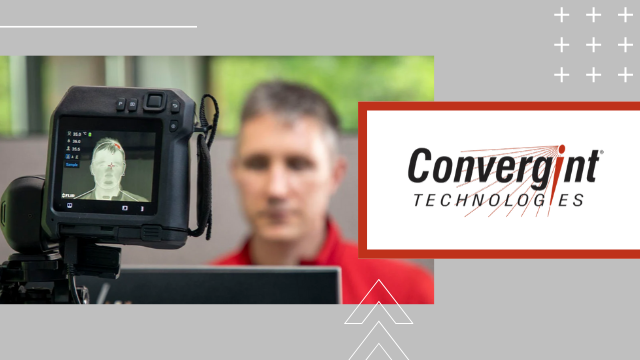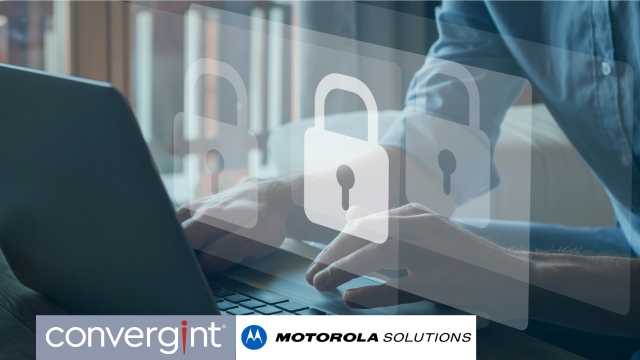Since the beginning of the COVID-19 crisis, Convergint’s Advanced Solutions Team has had the opportunity to discuss thermal imaging applications with our enterprise accounts across the globe. Convergint has been helping to assess their current safety plans and contribute to their return-to-work strategies. In regards to the fast-paced thermal imaging market, Convergint will continue to monitor new companies, technologies, guidelines from the FDA and CDC, and Convergint’s continued alignment with those guidelines moving forward.
The CDC states the incubation period (time from exposure to development of symptoms) of COVID-19 ranges from 2 to 14 days. This potentially allows contagious individuals back into the work environment bypassing screening questions and deployed technology, highlighting the need for following best practices, such as social distancing and face coverings.
A summary of changes to guidance from the CDC notes that for healthcare facilities, everyone should be screened for fever and any other symptoms of COVID-19.
On March 30th, the Advanced Solutions Team took a moment to address the rapidly growing requirement of companies wanting to use thermal cameras to identify elevated body temperature. The team prefaced and concluded the initial findings regarding the availability of these products with cautionary considerations. As more information has become available and have had a chance to evaluate solutions in the field, Convergint is using this to educate, manage expectations, and provide ways to identify misleading information surrounding thermal cameras.
Potential benefits of deploying thermal cameras for initial temperature assessment
Thermal cameras deployed at entry points provide a highly visible investment for screening employees for initial temperature assessment. This visibility, in addition to reorganizing entry spaces in compliance with social distancing, demonstrates a commitment to bringing employees back-to-work safely.
To avoid employing people to manually take workers’ temperatures, deploying a thermal camera as a first assessment layer can automate and distance frontline employees from the general population. Qualified staff should be used for secondary screening only.
In some regions, guards are being paid up to $90 an hour and require full PPE gear, making the ROI of a thermal camera investment fairly small in addition to the safety considerations for those positions.
Employees, visitors, and contractors are expecting companies to help reduce the risk of COVID-19 exposure. With the growing impact of COVID-19 on the economy, several organizations have already identified multiple cases of employees and contractors reporting to the workplace with an elevated body temperature.
What impacts thermal camera accuracy?
Many factors contribute to accuracy, these include:
Our team has identified solutions that are good, better, best, and are either FDA approved or follow the guidelines laid out by the FDA. Hopefully, a better understanding of the limitations of this technology for this application will help companies develop stronger and more realistic strategies for going back to work. The challenge ahead is to now address the kiosk/IR Sensor/tablet market that has emerged with several new products in the last month coming to our attention. Convergint continues to caution companies about diving into products that could have false camera accuracy claims, supply chain concerns, the company was just created, or they have never sold technology in this space previously.
How do I deploy this in my lobby?
The final deployment location of the camera needs to be in a controlled environment away from the opening and closing of doors to maintain a constant temperature. The space needs to be reorganized with clear pathways that allow social distancing and time to acclimate the skin from outside conditions. An example of this is to queue people like an amusement park ride with appropriate spacing.
Expect this space to be highly visible and not to integrate with all other systems. It is still unknown if the ability for employers to continue to take temperature readings of employees will be an allowable practice when the pandemic is lifted.
When screening people take the appropriate steps:
If a person is screened and has an elevated skin temperature, it is recommended to have a secondary screening location with a qualified person in PPE and an FDA-approved handheld thermometer to decide the next steps. Don’t forget to account for system throughput, especially in high traffic areas. Proper space design for multiple inspection lanes and crowd management solutions will be key for a smooth screening process.
Logging temperatures and integrating with access control
At this time, Convergint recommends keeping everything standalone to reduce time. Aside from storing data that may require HIPPA compliance post-pandemic, many of the devices themselves are not ONVIF, networkable, or have input/output capabilities. Additionally, it poses a cybersecurity risk depending on the country of origin.
After the pandemic, according to an ADA/EEOC regulation, it may no longer be acceptable to measure employee temperatures. Waiting to see if this is the “new normal” will allow companies to address policy changes at which time a more permanent integrated solution may be required.
Deploying in small lobbies or screening in cars
Thermal cameras cannot be used outside to achieve a high degree of accuracy when screening people. Environmental factors will impact accuracy. A tent without environmental controls will also experience these changes throughout the day and can impact a camera’s accuracy. Additionally, handled thermometers struggle outside, as well as taking a temperature in a vehicle. If the AC or heat is on, the results can mirror that ambient temperature.
This would apply to the IR Sensor solutions claiming they can read a subject in their vehicle from a pedestal. It will give a temperature reading, just not indicative of internal temperature, but instead of skin temperature.
Can I just get a solution that scans everyone when they walk in so I don’t need to queue people or worry about acclimation?
Yes, there are a lot of those systems, but they take a temperature of the visible parts of the body and are doing it a distance. This creates a problem when people have eye or hardware on, making it difficult to determine if one person’s temperature is elevated over another.
The spatial resolution of even FDA-approved devices require you to be at an appropriate distance, usually under 2 meters, which makes it difficult to claim accuracy beyond that distance.
If it is a very high-traffic area with no way to route, these systems may be better than doing nothing, but the limitations of thermal cameras would apply here as well.
Navigating limitations
Convergint can help navigate, install, and service a system that takes all factors into consideration. The Advanced Solutions Team has done their best to identify solutions that are good, better, best, and are either FDA-approved or follow the guidelines laid out by the FDA. Hopefully a better understanding of these limitations of this technology will help companies develop strong strategies for going back to work. Convergint continues to caution companies about diving into products that could have false camera accuracy claims, untrustworthy sourcing, or falsified marketing materials.






